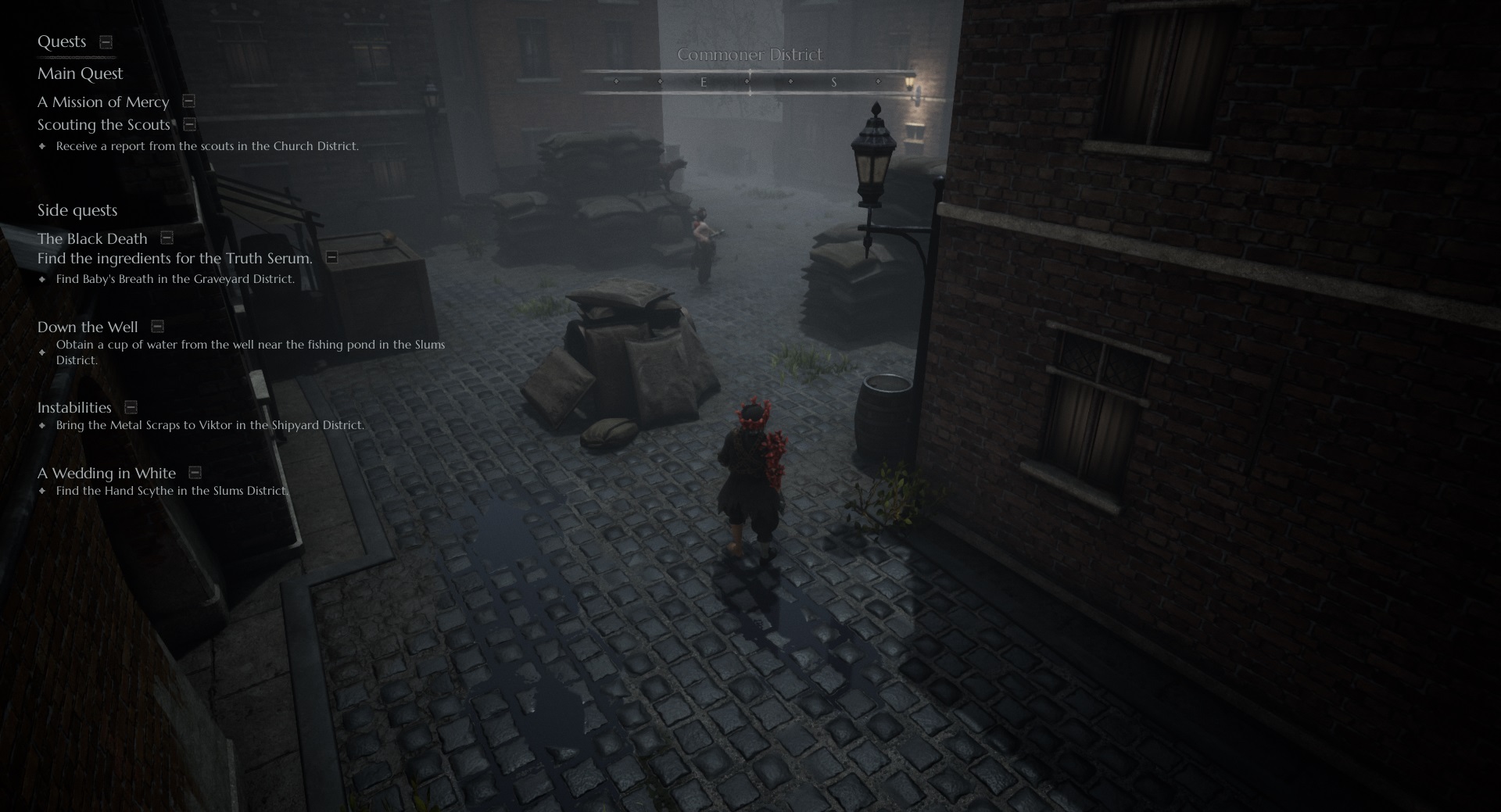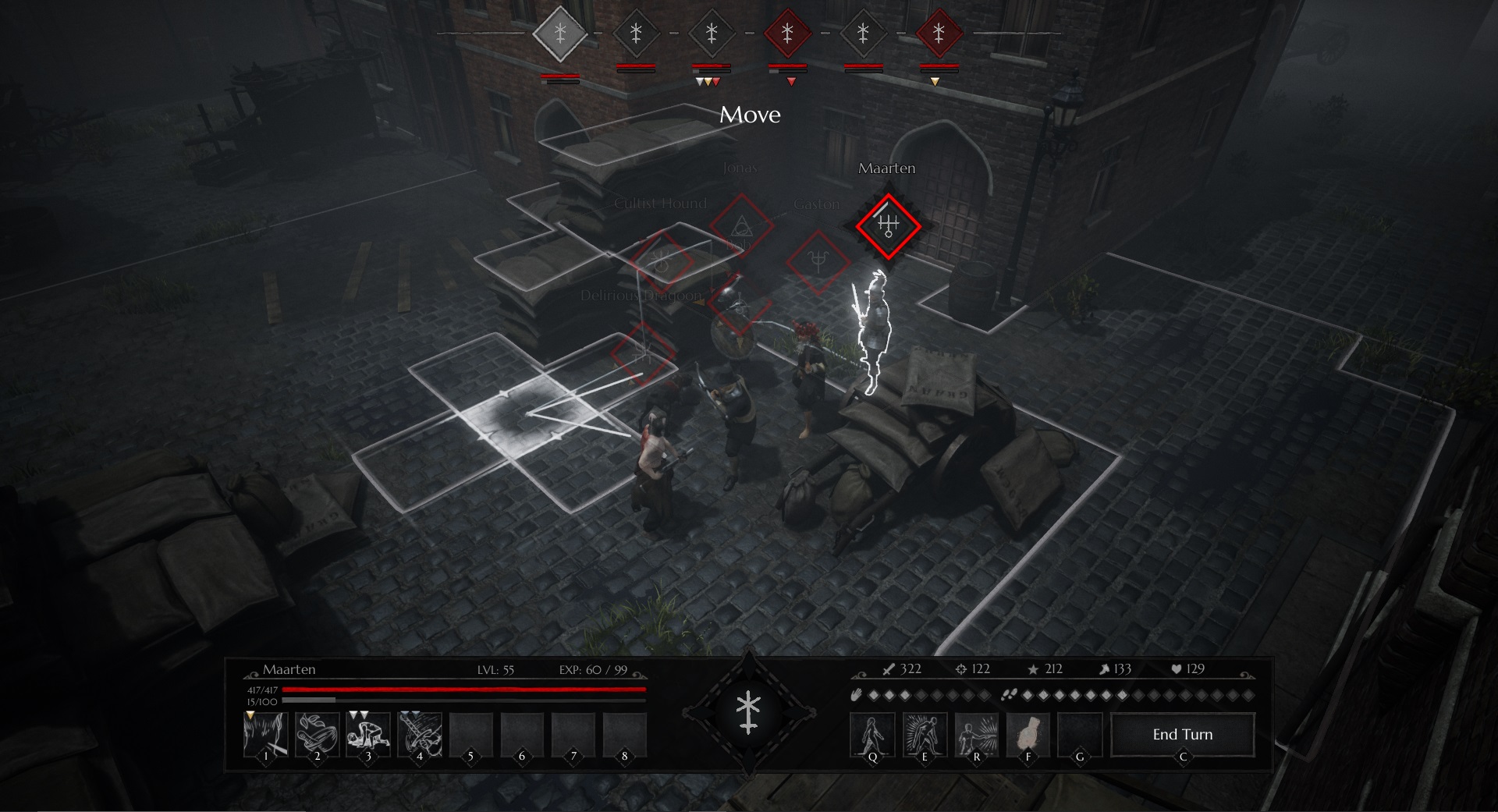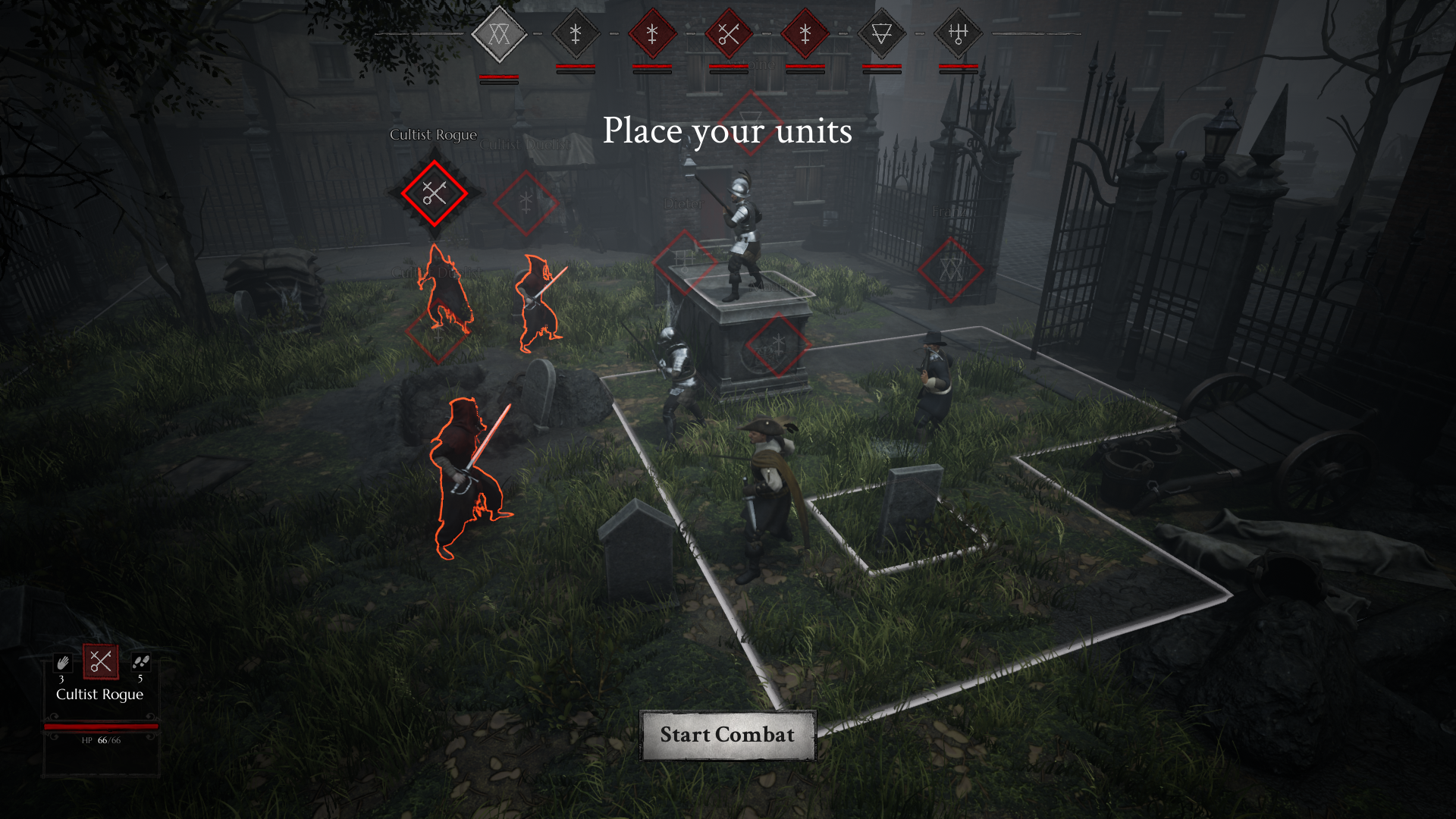Review: Black Legend (Nintendo Switch)
The medieval setting of Black Legend is not a happy place to be. Unlike most turn-based RGPs I’ve played lately—especially on the Switch—there’s not a lot of color. There are no opulent outfits with which to play dress-up. There are no melodramatic teenagers. Warcave has created a dreary world and confined you to it throughout the game’s duration.
Whether that’s a positive or a negative is up to you. Personally, I just want a world I can buy into, and I was able to do that with the city of Grant. What happened here, it seems, is an alchemist named Mephisto has enshrouded the city in a thick, perpetual fog. Your task, as a mercenary, is to seek out Mephisto and put an end to this. Trouble is, his cult-like followers would rather you not meddle in their affairs.
So, you enter town with a “Good luck, you’ll likely be dead by morning” tutorial, then you’re turned loose within the walls of Grant. Of course, there’s a campaign, but it’s all presented differently from what you’d expect out of a turn-based RPG. Instead of the traditional exposition followed by setup followed by a new grid for combat, you get to move your character through town in a third-person perspective.
You’ll see enemies down alleys, and whether you try to engage them or sneak past them is often up to you. This approach does a fantastic job of immersing you within this wonderfully creepy town.
The problem, however, is that this wonderfully creepy town is all you’re going to see. There are no other locations to visit, so the scenery never changes. This means you’ll get an awful lot of grays with the occasional sprinkle of browns, and there you are. Again, great for cohesion, but not great if you’re used to the occasional change of pace.
Thankfully, the combat gives you something new with which to play around. Most strategy RGPs task you with customizing skills, weapons, and armor to optimize your party, and that does exist here. There are 15 available classes, all of which allow you to use a variety of weapons. Obtaining a new weapon means you now have access to the classes that use it, so it’s easy to customize your group as you prefer.
Being effective at combat, however, also requires you to master an alchemy system based on humorism. Here, you’ll utilize elemental skills that attach “instabilities” to your enemies. You can combine these, then use them to unleash catalyst attacks for devastating damage. It gives you a wonderful layer of combat strategy beyond the typical weapon selection and positioning. This is especially important in the game’s boss battles, which are pretty difficult even with the game’s easiest settings. It’s actually kind of like the orb-break system used in Xenoblade Chronicles 2, and beating the tougher bosses can feel just as rewarding.
Difficulty, however, isn’t the real issue with Black Legend; pacing is. Combat requires you to select and equip your combatants, then place them on the combat grid. Initial placement is very important, as you’ll want to make sure characters are able to defend themselves and each other while being able to land attacks.
Direction matters, as does height. You can jump up on boxes, for example, to get the high ground on an attack or to avoid an enemy, but it takes up more of your movement time. Movement/attack options are limited during each turn, and you need to consider how open you are to attack after your turn is up.
So, there’s a lot to consider, and the visual cues aren’t terribly helpful. Selecting your character and determining where to go is surprisingly cumbersome, as if it was meant for a keyboard, not a Joy-Con. It doesn’t help that the game’s UI relies on an icon system that is oddly difficult to figure out. I had to draw up a cheat sheet just to keep track of the various classes and capabilities, and I was still referring to it deep into the game. Having to do so already slowed down a fairly slow, highly repeitive system.
Combining this with a lot of back-and-forth drudgery means the game never really picks up any momentum. It’s fun to find the occasional shortcut through town, and side quests give you something to achieve along the way, but even then, you’re often forced into combat when you really just want to quickly get from point A to point B.
The occasional lengthy load time slows things down even further.
It doesn’t help that there are some odd audio and graphic glitches that knock the game down further. I loved Black Legend’s use of lighting effects, shadow, and texture to bring Grant to life, but the town still feels empty and redundant. That’s realistic, yes, but I play games like this to escape reality.
This isn’t to say SRPG gamers should avoid Black Legend. The story is fine, and it’s certainly unique enough to stand apart from similar games you may have played. You’re likely to keep your gaming sessions shorter than usual, but it’s one you’ll eventually be able to push through. Just don’t feel bad about going with the easy settings. If you get too frustrated, you may give it up for good.
The post Review: Black Legend (Nintendo Switch) appeared first on Pure Nintendo.
* This article was originally published here




Comments